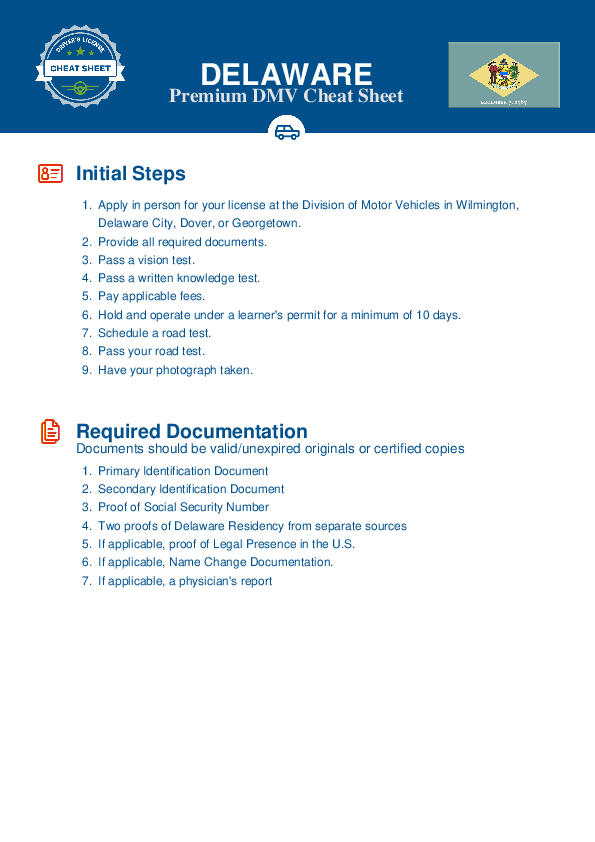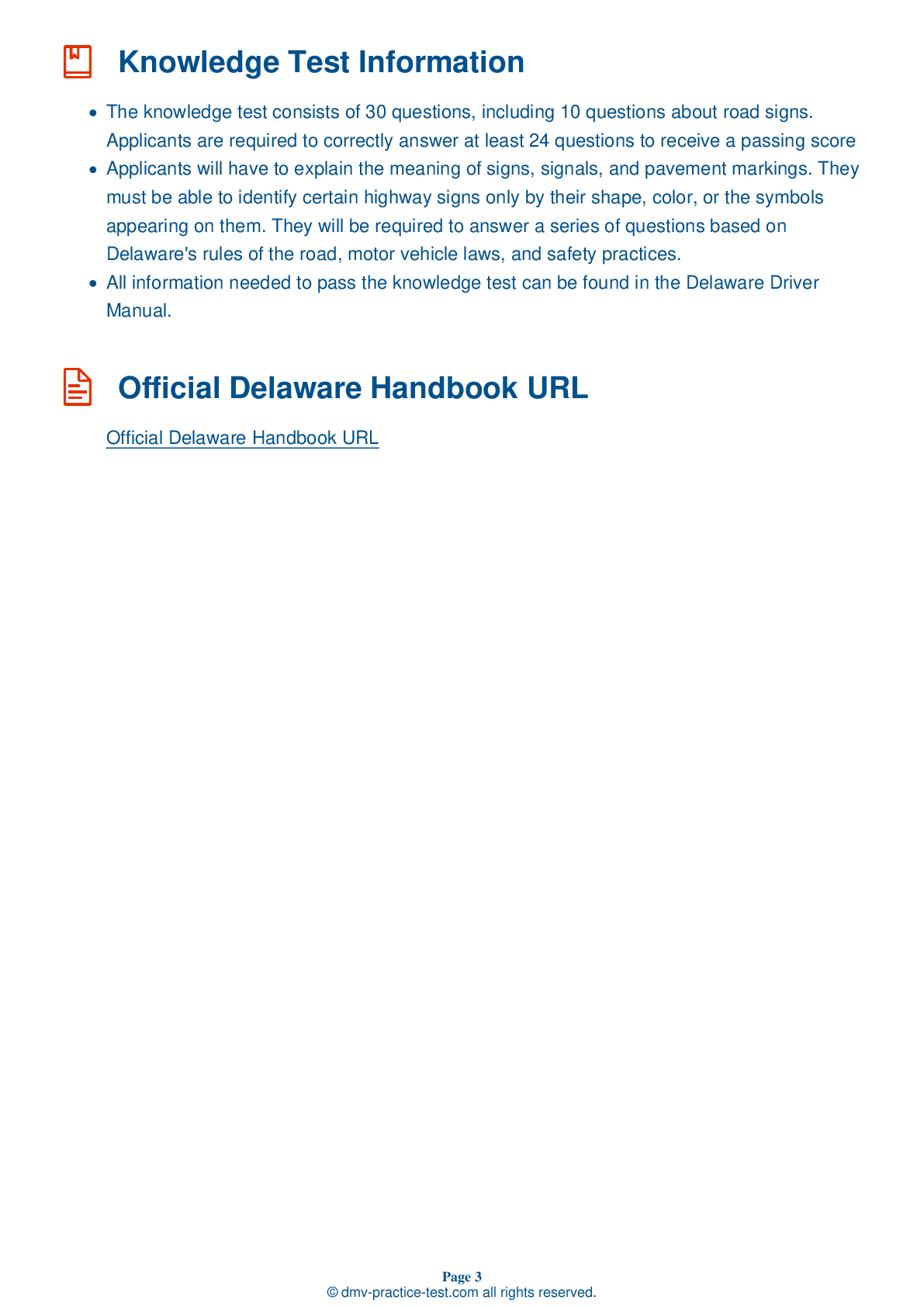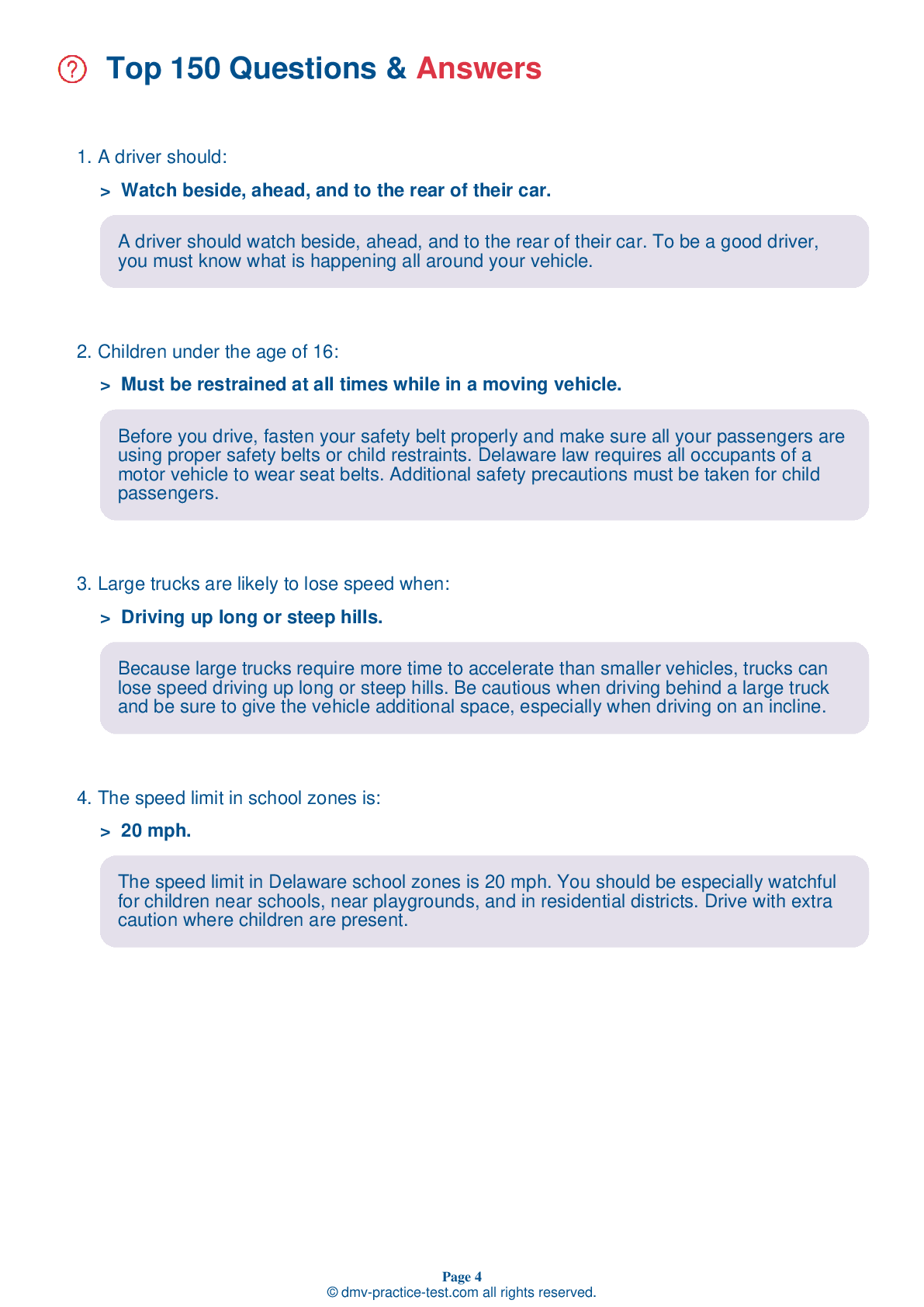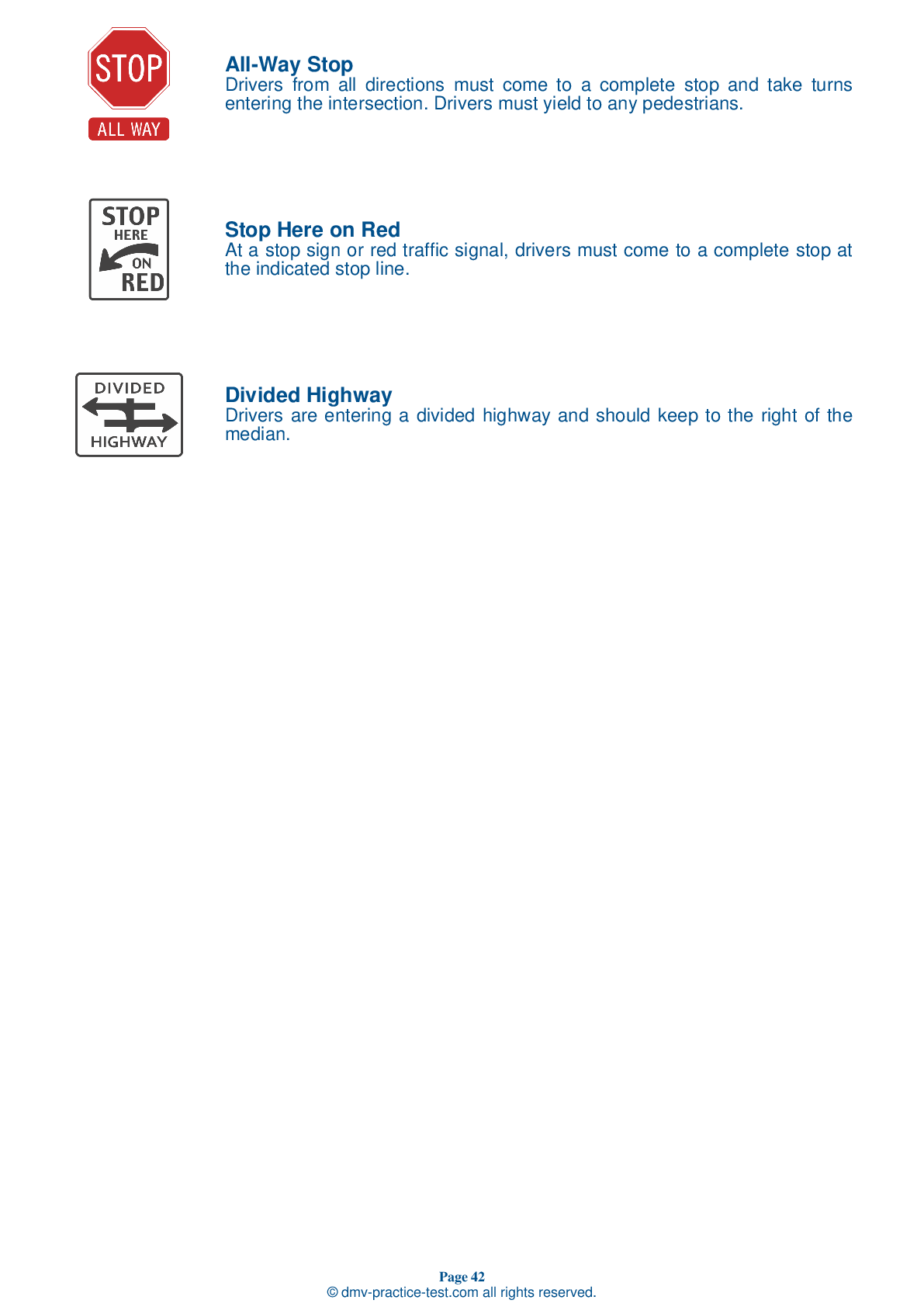FREE Delaware DMV Practice Test #21 Page 2 of 4
This set of DMV practise tests for Delaware was just updated for January 2025. It comprises questions based on the most important traffic signs and rules for 2025 from the Delaware Driver Handbook. To study for the DMV driving permit test and driver's licence exam, use actual questions that are very similar (often identical!) to the DMV driving permit test and driver's licence exam.
Each question on the practise exam has a tip and explanation to help you recall the ideas. Questions about road laws, traffic signs, and driving statutes, as well as information from the Driver Handbook, will be included in the written portion of the official DMV test.
You must properly answer 20 of the 25 questions to receive the required passing mark. To help you prepare for your Delaware instruction permit or driver's licence, take our DMV practise test.
The DMV exam is offered in a variety of languages.
Using any kind of testing assistance will result in an automatic fail, and the DMV may take additional action against your driver's licence, so stay away from it.
9 . Work zone barriers, drums, cones, and signs are used to:
Work zones on highways have become increasingly dangerous places for both workers and drivers. When approaching a work zone, watch for materials such as cones, barrels, signs, large vehicles, and workers in brightly colored vests to warn you and direct you.
10 . If you drive faster than other vehicles on a road with one lane moving in each direction and continually pass the other cars, you will:
You should avoid passing other vehicles on two-lane roads. Every time you pass a vehicle, your odds of being in a collision increase.
11 . If you experience a tire blowout:
If you experience a tire blowout, you should slow down gradually by taking your foot off of the accelerator. Don't apply the brakes until the vehicle has slowed considerably.
12 . Which statement is true?
You must stop at a railroad crossing when directed to do so by a flagger, stop sign, or warning signal. Use caution when driving near railroad tracks.
13 . This symbol is used for:
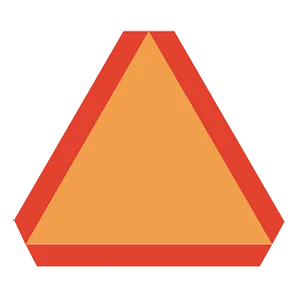
A reflective orange triangle on the rear of a vehicle means it travels only at slow speeds. You may see this sign on roadwork equipment, farm vehicles, or horse-drawn wagons and carriages. It appears as a solid orange triangle during the day and a hollow red triangle at night.
14 . This sign means:
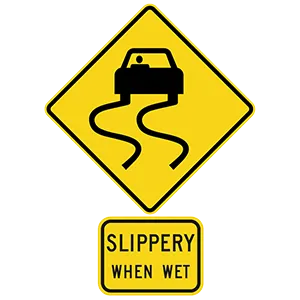
Warning signs are usually yellow with black markings. They alert you to conditions that are immediately ahead. This sign warns that the roadway is slippery when wet.
15 . A distraction when driving is:
A distraction when driving is anything that takes your attention away from driving. Driver distractions may occur anytime and anywhere. Distracted driving can cause collisions, resulting in property damage, injury, and death.
16 . When approaching an intersection controlled by a flashing yellow light, you must:
A traffic signal displaying a flashing yellow light indicates that you should be alert and proceed with caution. Slow down when approaching a flashing yellow traffic signal.
See the exact questions that will be on the 2025 Delaware DMV exam.
99.2% of people who use the cheat sheet pass the FIRST TIME
LT gives us an insight on how the cheat sheet provided her with all the study questions she needed before taking her test.
Joe initially studied with the handbook and failed his test, he eventually found us online, studied and pass his test the first time around.
